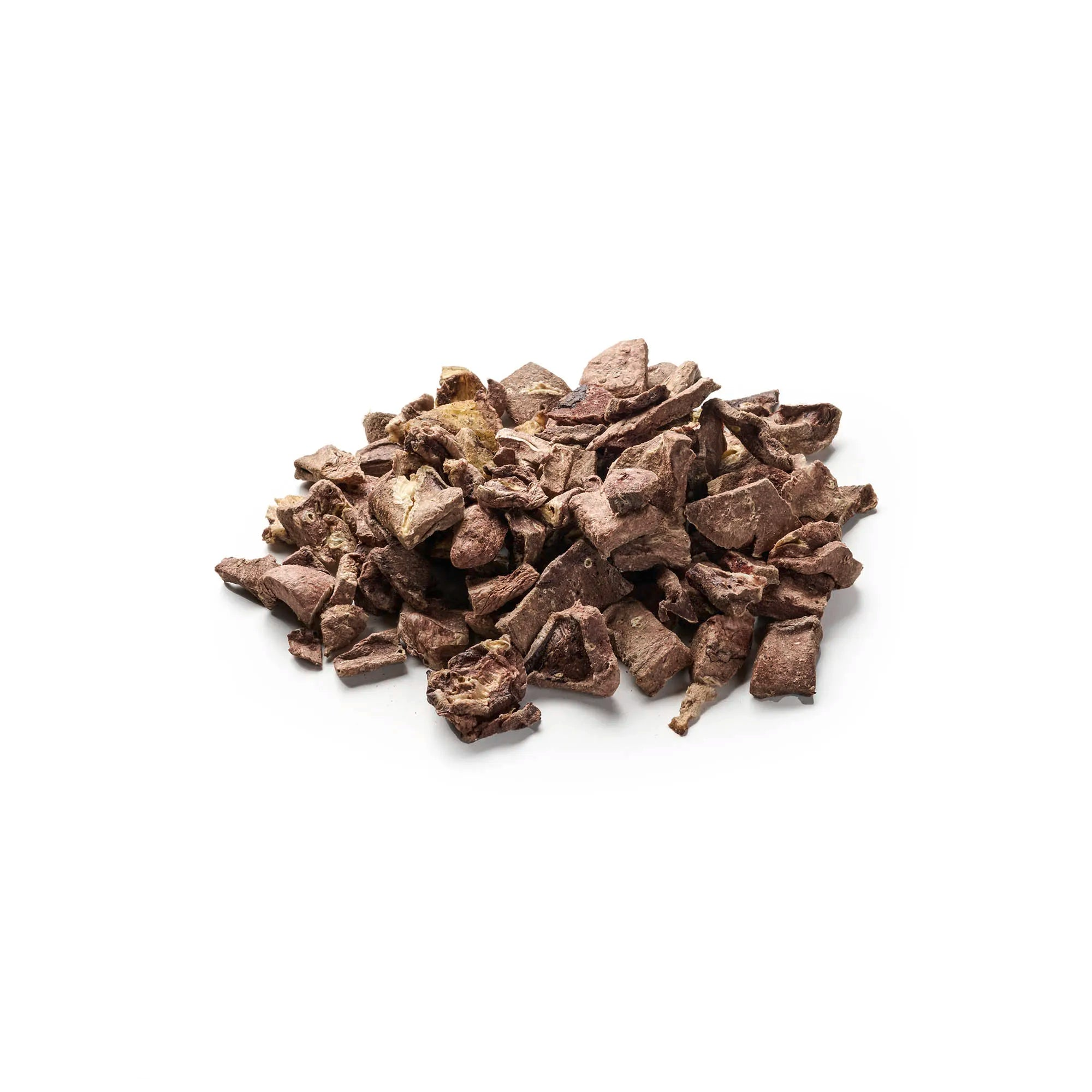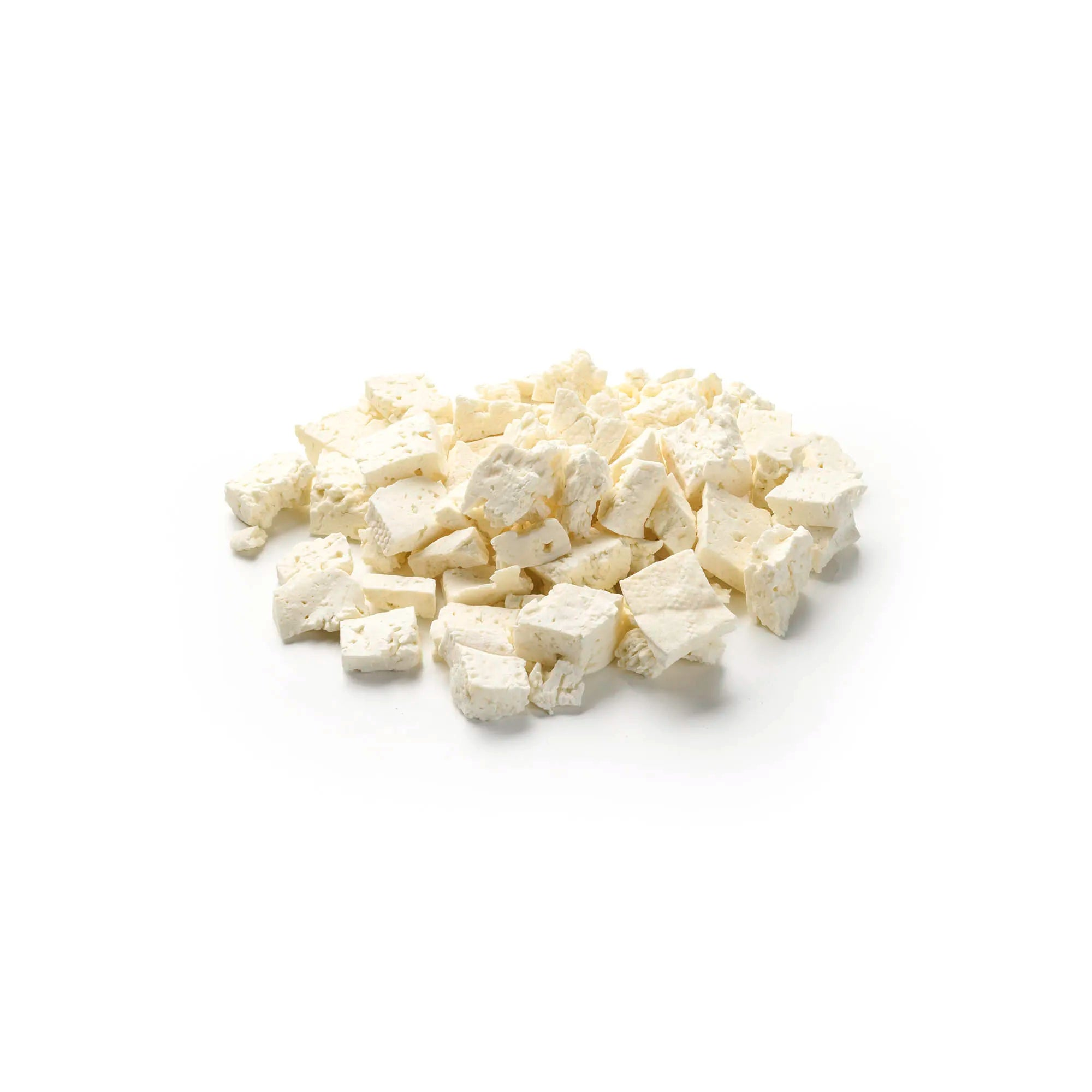
Dog diseases - an overview of the most common diseases in dogs
Share
If your dog suddenly doesn't want to eat or play anymore and it turns out that he is sick, it is usually a shock for the dog owner. Unfortunately, there are a whole range of dog diseases , but they are not always dangerous and with the right precautions they can often be prevented. Many dog diseases are quickly recognized, but some remain unnoticed for a long time and only then become dangerous.
Contents: Dog diseases
- Interpret symptoms correctly
- Worms in dogs
- Flea infestation
- Ticks in dogs
- Inflammation of the ears
- Hip dysplasia (HD)
- Cataract
- Tumors
- hepatitis
- Kennel cough
- Allergies
Spoil your four-legged friend with our delicate chew items!
Interpret symptoms correctly
In order to detect dog diseases at an early stage , regular routine examinations should be a matter of course. In this article, we will introduce you to the ten most common dog diseases and explain what you can do in an emergency and how best to take precautions.
But before action can be taken, an illness must first be recognized. Unfortunately, as humans, we do not understand animal languages, we must pay attention to other signs. There are enough of them and most people notice when their four-legged family member behaves differently than usual. The following points will help to correctly interpret the various signs and identify where the pain is coming from:
- The dog does not lie down and is restless
- He just lies around and doesn't get up anymore
- Getting up seems difficult
- Apathy - he seems absent and disinterested
- Does not eat or drink
- Touch sensitive in one or more places
- Limping
- Excessive drooling indicates nausea
- Tremble
- Heavy panting
Worms in dogs
One of the most common diseases is the so-called parasitosis. Animals, but also humans, are attacked by parasites and deprive their host animal of important vitamins and nutrients.
A well-known form of parasite infestation in dogs is tapeworms, which occur as fox tapeworms, cucumber seed tapeworms or pinworms. Special care is required here, as humans are not safe from these nasty parasites either!
Puppies should be watched closely here, as they are particularly susceptible. The symptoms of a worm infestation are varied and depend on the age of the dog and the type of worm. A sure sign is to be found in the dog's feces, as you can see them. Not a pretty thing, but if you find small white creatures that look like grains of rice when examining them, you can be sure.
A worming treatment can be used not only for healing, but also as a preventative measure. Since some types of worms can also be transmitted during birth, it may make sense to subject mother dogs to a worming treatment before pregnancy.
It is controversial whether such a worming treatment should always be used as a preventative measure or only in the case of an acute worm infestation. In any case, a regular examination by a vet is recommended. He can examine the dog's feces in detail and make recommendations if necessary. You can find out more about this topic here: Worming treatment for dogs.
Symptoms at a glance:
- Visible worms in dog feces
- Bloody diarrhea
- Vomit
- Worm belly - The stomach is painful and bloated
- Slide your anus across the floor to relieve itching
Pamper your dog with our chew products!
Flea infestation
The next parasite on our list is the well-known flea. These little beasts are also quite common in dogs. They usually come from other dogs or animals with which the dog has come into contact.
We humans can also transmit them. It is important to know that usually only about 5% of the flea colony lives on the dog. This means that the rest can be found in the animal's environment. Usually the dog's own home and especially the dog's sleeping area .
Symptoms at a glance:
- Severe itching in dogs
- Inflamed and reddened skin
- Loss of fur
If you look closely, you can usually see them with the naked eye. They mainly crawl around on the skin near the ears and neck. In order to eradicate the small parasites, the dog should not only be treated, but also cleaned thoroughly.
There are dog shampoos, tablets or powders available for flea treatment. But the best way to take precautions is to use special flea collars to prevent flea infestation from the start.
Discover our selection of premium dog chews!
Ticks in dogs
Ticks are also parasites and for many people the small arachnids are nightmarish monsters, because even if the bloodsuckers themselves are not a big threat, the diseases they transmit definitely are.
It can be life-threatening not only for dogs but also for humans. That's why it's so important during tick season to check not only yourself but also your dog for ticks after every walk.
They are not always easy to find, but in our article: Ticks on dogs - what helps? you will find useful tips on where they bite and how best to remove them. This topic should be taken seriously, because the diseases they transmit, such as Lyme disease, can be fatal, as mentioned above!
Symptoms at a glance:
- apathy
- Loss of appetite
- fatigue
- Urine with reddish-brown color
Inflammation of the ears
Proper care for every dog also includes cleaning the ears. This can prevent infections. One sign of an ear infection is smelly, dark brown ear wax.
Dogs also scratch their ears noticeably often. If the ears are particularly warm, a veterinarian should be consulted.
Symptoms at a glance:
- Warm ears
- Increased scratching of the ears
- Dark brown and smelly ear wax
Hip dysplasia (HD)
This disease causes the dog's hip joint to become deformed, which restricts movement. Some dogs are born with the disease, while others become ill due to poor nutrition or a lack of exercise.
This disease mainly affects large dog breeds such as Great Danes and Newfoundlands . They need suitable dog food with a low protein content, especially during growth. The best preventative measure is a healthy weight and enough exercise.
Symptoms at a glance:
- Unsteady gait
- Painful getting up & lying down
- The dog moves little & stiffly
- Cracking of the joints
Cataract
As with humans, this eye disease often occurs in dogs as they get older and is often inherited. Some dog breeds are more severely affected than others. Labradors, Golden Retrievers and Huskies are more likely to suffer from it.
Since this disease causes the eye, or rather the lens, to become cloudy and limit vision, the name is not accidental. Without treatment, it inevitably leads to complete blindness.
The only “advantage” is that this disease is easy to detect. To treat it, there is no alternative but to undergo surgery, which entails considerable costs.
Symptoms at a glance:
- Gray clouding of the lens
- Poor eyesight
Tumors
This list also includes tumors. One of the most common tumor diseases in dogs is the so-called mast cell tumor. They are usually found on the limbs, head and torso. Although the cause has not yet been researched, since it mainly affects purebred dogs such as boxers and retrievers, it is assumed that it is genetically inherited.
Since these tumors rarely affect internal organs, they are usually easy to feel. It is therefore advisable to feel the dog regularly, as there is currently no effective preventive measure known. If a skin lump is felt or the dog loses a lot of weight and no longer has an appetite, urgent action should be taken.
Only a veterinarian can provide clarity through further examinations and initiate appropriate treatment. Surgery is usually required to get rid of the tumor.
Symptoms at a glance:
- Loss of appetite
- Severe weight loss
- Skin nodules
hepatitis
When dogs suffer from hepatitis, the liver usually becomes inflamed due to infection by specific viruses, but also by parasites and toxins. This liver inflammation can become chronic and be fatal.
Because this disease is extremely contagious, not only humans but also dogs should take advantage of existing vaccinations, because treating this disease is not easy and takes a long time.
Symptoms at a glance:
- Loss of appetite
- Painful abdomen
- Gastrointestinal complaints
- Fever
- Vomit
- apathy
- thirst
- Jaundice
Kennel cough
It is the first dog disease in this article that we humans don't have to be afraid of. At least not directly, because it is a disease that only animals can have. As the name suggests, it often occurs where many animals come together, such as in a kennel or a boarding house.
Kennel cough attacks the upper respiratory tract and leads to violent coughing and gagging. This can result in pneumonia, which is the real danger and can be fatal in the worst case. Young dogs or dogs with weakened immune systems are particularly susceptible.
To prevent pneumonia, a vaccination can be administered. If you suspect pneumonia, you should immediately consult a veterinarian to avoid it.
Symptoms at a glance:
- Severe cough
- Strangle
Allergies
The symptoms of allergies can be varied and, as with humans, it is not always easy to find the trigger. An allergy test can also be carried out on dogs and provides clarity.
However, it is often simply the wrong food, which in turn can be due to a variety of ingredients.
If your dog shows one or more of the following symptoms, an allergy test and a consultation with your trusted veterinarian makes absolute sense. You can find out more in our article: Allergies in dogs - what you should know!
Symptoms at a glance:
- Swelling
- Nose and eyes wet
- Bumps
- Red skin patches
- Vomit
- Diarrhea
Of course, these were just some of the most common diseases in dogs . If you want to keep your dog healthy and fit, you should make sure that it has a healthy and balanced diet as well as sufficient and varied exercise. This applies not only to dogs, but also to us humans.
High quality dog snacks to pamper your dog, now available!

















